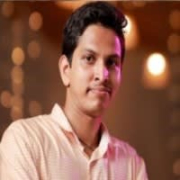

Zerto and NetApp Cloud Volumes ONTAP compete in disaster recovery and data management. Zerto has an advantage in rapid RPO and RTO for business continuity, whereas NetApp excels in cloud integration and data management.
Features: Zerto features near-synchronous replication, live migration, and swift VMware failovers with a hardware-agnostic interface for easy deployment. NetApp Cloud Volumes ONTAP offers strong cloud integration, SnapMirror capabilities, data deduplication, and supports various storage protocols ensuring efficient data migration.
Room for Improvement: Zerto could enhance reporting, backup capabilities, and multi-cloud support, while improving alert integration and licensing flexibility. NetApp Cloud Volumes ONTAP should improve its reporting tools, adjust pricing for smaller enterprises, and expand storage solutions for broader cloud synthesis.
Ease of Deployment and Customer Service: Zerto offers straightforward deployment across on-premises and hybrid environments with responsive customer service ensuring quick setups. NetApp excels in cloud deployment, notably in hybrid settings, though its process is more complex and could benefit from improved deployment guides.
Pricing and ROI: Zerto's premium pricing provides substantial ROI with efficient disaster recovery and reduced downtime, though costs can be challenging for smaller businesses. NetApp Cloud Volumes ONTAP offers competitive pricing, especially when bundled, and provides good ROI for extensive data operations, although initial costs may be high for smaller implementations. Both balance performance with cost efficiency.
Before, it was a huge cost. It was several thousand dollars to do a DR test, whereas now, I click a button.
It saves us a lot of time and gives us the ability to perform other DR plans for other systems.
It's not only in the cloud; it's DR as a service, which means that the recovery operations are performed by a dedicated team specializing in this area.
I have never had an issue that was not resolved, and I have never been in a situation where they did not respond.
I would give them a rating of ten because it represents the highest level of support based on the technical knowledge of the support team, response time, and effectiveness of the provided resolutions.
When I open a ticket, I usually get a call within an hour or two.
I would rate it a ten out of ten for scalability.
Customers need to follow good engineering practices for optimal product use.
By adding more hosts and installing VRAs on each, tasks can be efficiently managed.
I promptly delete the malfunctioning elements and set them up again to resume replication, ensuring stability.
The ease of use was so good with Zerto that they were able to migrate things much quicker.
It is very reliable.
If I have 350 objects that I am protecting, I would like Zerto to be able to fire them up in one order, rather than having to manually bring them up in a sequence.
If the host has a lot of VMs on it, there may not always be enough time to relocate all of the VMs from a protection group standpoint to other hosts before the replication appliance that Zerto uses to manage that powers itself down.
If HPE Zerto Software has it built-in where we're going to vCenter and you click on it, it will build the VPG and indicate configuration requirements, that would be amazing.
My opinion is that support is generally very good. There are instances where they take longer to respond or resolve issues, especially when customers have urgent needs, but ultimately, resolution is achieved.
If you want a good-quality tool that is robust and does a good job for you, you have to pay a higher price to get that, and Zerto is no different.
However, it can become quite expensive when you start looking at the number of workloads you have in the environment and what you would like to do.
Zerto is easier to set up and use, and it's less expensive.
Zerto offers excellent technical support with responsive and helpful experts.
If we were attacked, I could revert to a backup from five seconds before the attack, and no one would know we were attacked.
The replication time and the minor amount of time it takes to sync a new server outside of any of my huge 40-terabyte boxes is ridiculously quick.
| Product | Market Share (%) |
|---|---|
| HPE Zerto Software | 6.2% |
| NetApp Cloud Volumes ONTAP | 10.1% |
| Other | 83.7% |


| Company Size | Count |
|---|---|
| Small Business | 92 |
| Midsize Enterprise | 86 |
| Large Enterprise | 193 |
| Company Size | Count |
|---|---|
| Small Business | 7 |
| Midsize Enterprise | 11 |
| Large Enterprise | 53 |
Zerto is used for disaster recovery, business continuity, data migration, and ransomware recovery, providing continuous data protection and near real-time replication. Valued for ease of use, efficient failover processes, and versatile integration, it enhances organizational efficiency, reduces errors, and boosts productivity.
NetApp Cloud Volumes ONTAP is an efficient storage management solution for managing and storing data in the cloud. It offers seamless integration with cloud providers, advanced data replication capabilities, and high data protection. With reliable performance, it is ideal for industries like healthcare and finance.
We monitor all Cloud Migration reviews to prevent fraudulent reviews and keep review quality high. We do not post reviews by company employees or direct competitors. We validate each review for authenticity via cross-reference with LinkedIn, and personal follow-up with the reviewer when necessary.